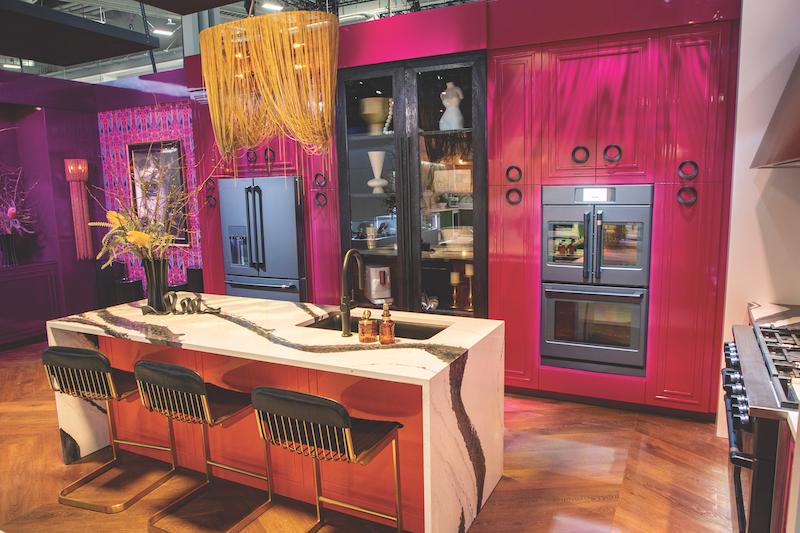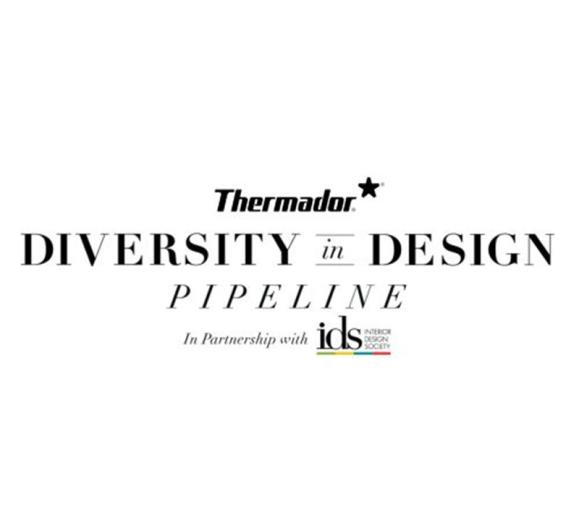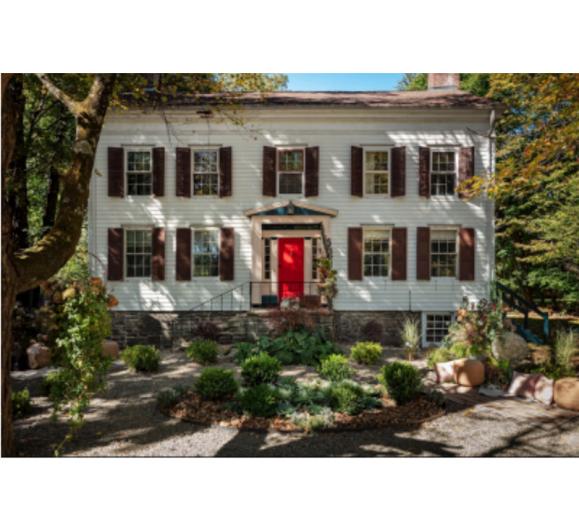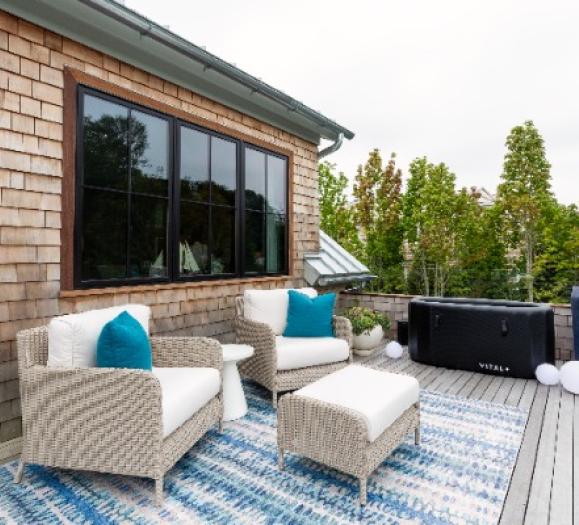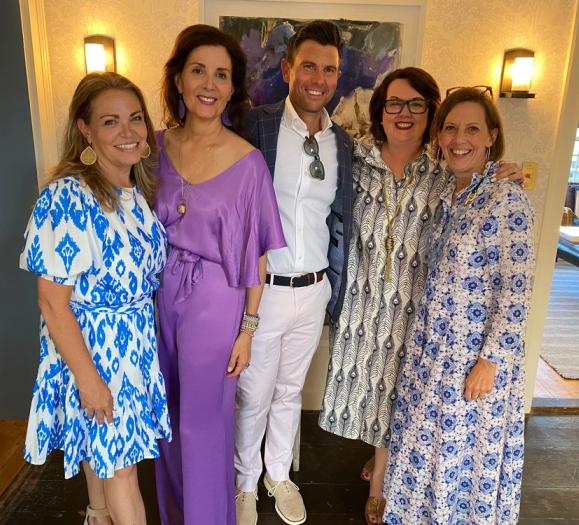If KBIS 2023 is any indication, changes are coming to interiors at a kitchen and/or bathroom near you. With the continued growth of smart home products, where kitchens and bathrooms are the primary recipients of such attention — and a move away from more sterile/minimalist interiors, these spaces are reflecting the homeowner’s personality while continuing to add convenience and functionality.
“Design in kitchen and bath are taking a bolder stance than they have in the past,” says Kerrie Kelly, founder of Kerrie Kelly Design Lab, in Sacramento, CA. In addition to heading up her design firm, Kelly is on the National Kitchen and Bath Association board, and is the Past-Chair of the National Board for the American Society of Interior Designers.
“Kitchens and baths had been light and bright and white,” she continues. “Now we’re getting a bit moodier. We’re seeing color, heavier veining in countertop materials, expressive feelings in regards to natural woods and fluting, texture in a bit of an unexpected way.”
This trend toward bold was seen throughout the KBIS experience this year (see KBIS recap on page 42), as saturated color was introduced in appliances, cabinetry, surface materials and more. Kohler went so far as to bring back heritage colors for a vote to to put one or more into production. Spring Green and Peachblow received the most votes and will be put into a limited edition release later this year.
Sharon Sherman, founder of Thyme & Place Design, in Wyckoff, NJ, puts an emphasis on kitchen and bath renovations in her interior design business. She agrees that color is on the rise in kitchens and bathrooms, with colored fixtures, such as tubs and tile making a comeback in the bathroom, and appliances, cabinets and more going boldly colorful in the kitchen.
Deep blues and greens tend to be the most popular choices, but saturated hues (such as shown on new Smeg and GE appliances) and even pastels were seen throughout the show. She adds that in addition to color, consumers are beginning to mix and match in these rooms of the home as well. “Consumers used to want to buy a kitchen suite with everything from the same manufacturer. Now they’re looking for alternatives,” she says. “People are now open to using something different.”
In fixtures such as faucets and hardware, beautiful detailed design and mixed materials are adding interest. Black continues to drive trends, but has moved on beyond matte blacks, adding sheen and texture, and in metallics, warm tones such as golds and honey bronzes are prevalent. “Hardware right now is beautiful,” says Sherman.
Kelly shares that these trends we’re seeing in the kitchen and bath reflect a renewed appreciation for these spaces. “We’re claiming our homes again and finding special moments throughout the kitchen and bath,” she says. “Before it was paint and reface. Now it’s can we inlay a snakeskin or metal detail into the hardware to make a statement. Consumers are elevating both of these spaces.”
The Wellness Factor
Sherman adds that appliance and fixture features that add a wellness element in the home are also on the rise for kitchen and bath remodels as consumers pay more attention to appliances that help relieve stress and generate overall well-being. Steam rooms, steam baths and steam ovens, for example, are seeing increased interest and are likely to become staples in high-end design as we head into an era where consumers continue to be focused on wellness. “Because of the technology, we don’t design kitchens without steam ovens anymore. You don’t need a huge space, and cooking with steam maintains nutrients,” Sherman says.
There is an overarching trend toward wellness in our homes, adds Kelly, noting that some of the changes she’s seeing have to do with an increased awareness of smart home technology. She cites the Breezo steam shower, for example, which allows the people using it to have up to four personalized settings, which include lighting, music and scent, in addition to temperature and strength of the water flow. “It addresses all the
senses,” she says.
Being in California, too, there are mandates that need to be addressed that focus on safety and sustainability. For example, installation of gas stoves will be banned in California beginning in 2030, but Kelly is ahead of the game, specifying induction ranges for her clients, rather than gas. “People are beginning to learn the benefits of induction. There’s a safety perk, for example, for all ages,” she says. Induction cooking is also a more sustainable and energy-efficient way of cooking, making these appliances even more attractive to consumers focused on that aspect of home design. While a sustainability focus is increasing, particularly among younger consumers, price is still a factor. “Sustainability is a hot topic,” Kelly says. “Ultimately, as the technology expands across the board, the price for more sustainable goods will come down,” making newer, more sustainable technologies a larger part of mainstream design.
Consumers are focused on recycled and sustainable
materials in their kitchens and bathrooms as well, adds Sherman. “Younger generations are into sustainability,” she notes. “Manufacturing needs to be rooted in sustainability, focused on recycling, giving back and offsetting carbon.” She says that manufacturers need to be transparent about their sustainability practices, and she is confident that this move toward sustainability will stick around as we move forward.
Smart and Functional
While smart technology takes hold in kitchen and bath, it is the ability to add convenience and multifunctionality to appliances and fixtures driving some of the consumer adoption of these products. As people get more comfortable with technology and it becomes more affordable, the inclusion of everything from smart showers to faucets to refrigerators will continue to rise. Sherman points to some multifunctional faucets that debuted at KBIS to illustrate how advanced these products are becoming. “There’s a faucet from Kraus, for example, that hooks up to a kegerator, and the Proline bar tap faucet can pre-mix drinks. Sangria mixes, margarita mixes, it’s all done for you. It adds to the home entertainment experience,” she notes.
One such faucet that received lots of buzz at KBIS was the Zipwater faucet, which delivers filtered water, carbonated water and filtered hot water. “We have one,” says Kelly. “We feel so sustainable.” The Zipwater faucet has allowed Kelly and her family to dispense with water bottles, carbonated beverages and more.
Smart function isn’t relegated to faucets either. Moen, last year, introduced a smart shower system that, like the Breezo steam shower, allows consumers to personalize their shower settings and can also monitor water usage and possible leaks.
For appliances, Hestan has introduced a stove with a marquee handle, which features a precision cooking display so you know the exact cooking temperature. “People are really focusing more on how and what they’re cooking,” Kelly says, and these new technologies are simplifying these tasks.
Overall, kitchen and bath interior design is taking on a far more personalized approach, utilizing color, materials and technologies unique to the needs of each consumer, making these spaces that we spend so much time in more functional and more comfortable.



